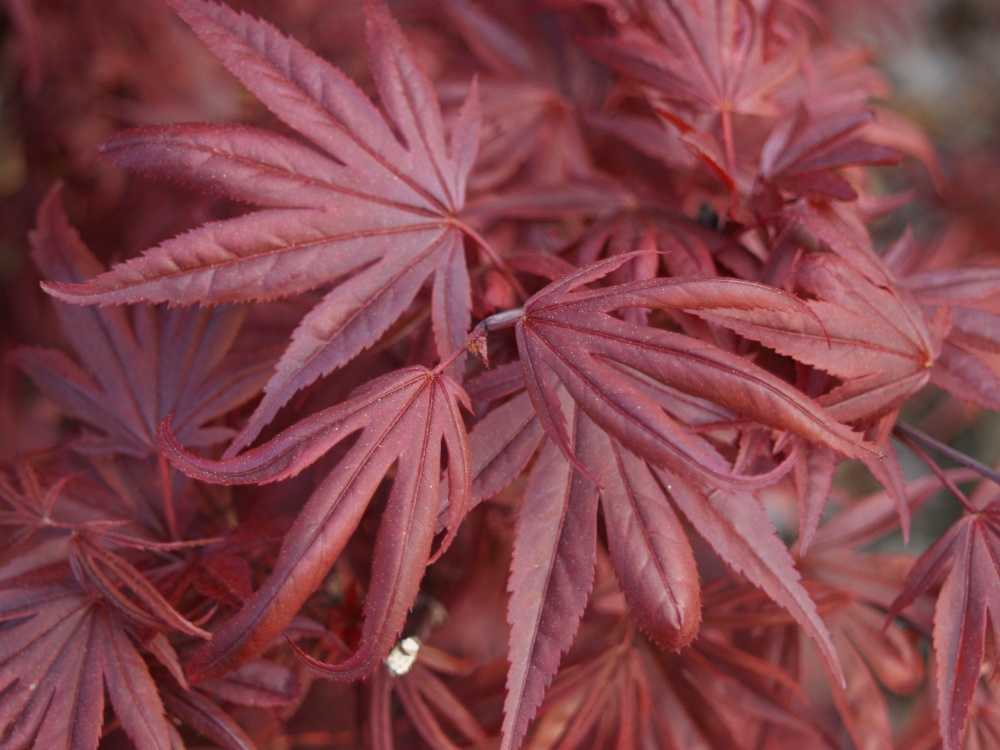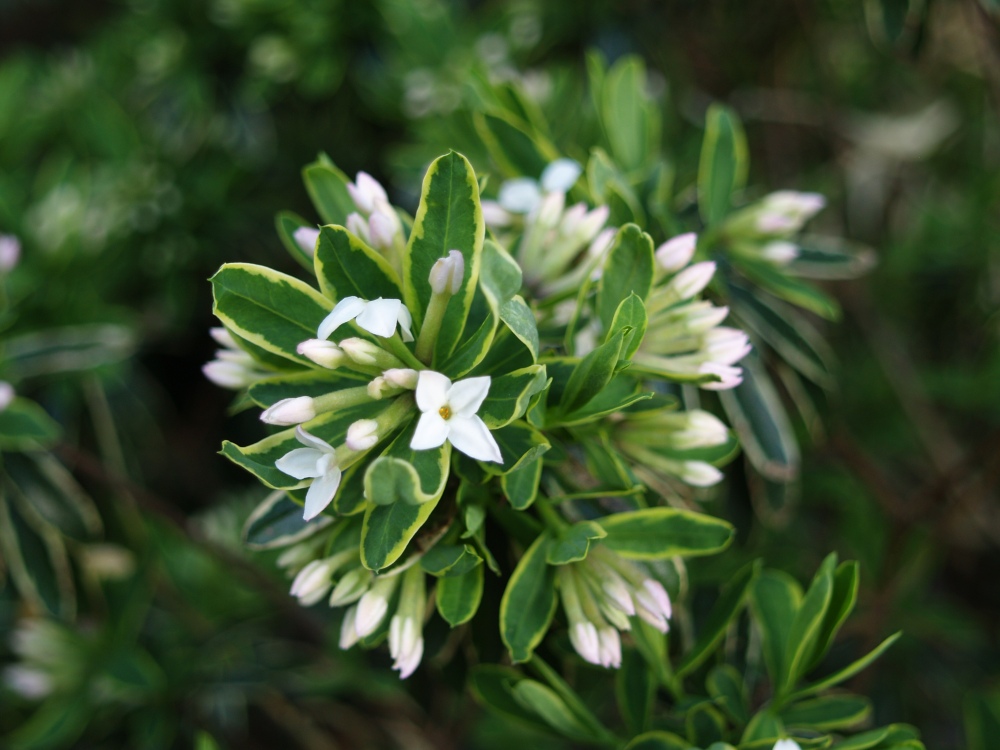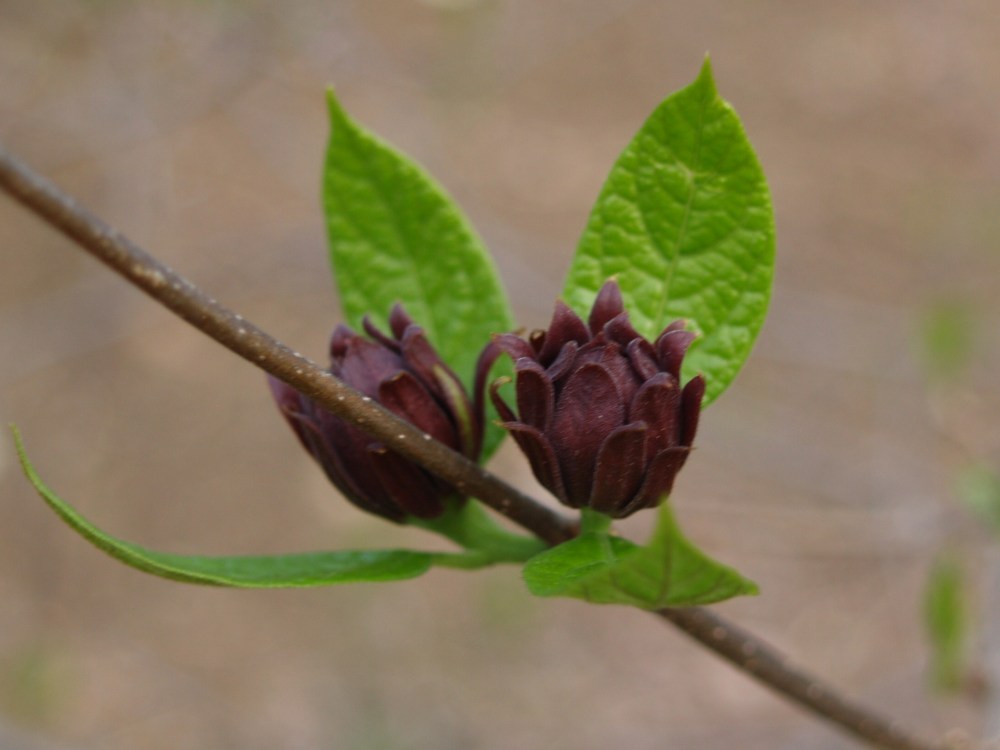My young niece has an emphatic manner of saying “No!”, so that you are undeniably assured that this is the final answer, no matter the question. My wife adopted a similarly stern tone this winter whenever I excitedly told her my plans for the garden for the upcoming spring. Fortunately, I’m not easily discouraged.
Admittedly, I was a bit too enthusiastic in preparing the list of plants that I cannot live without this spring.. My problems began with a visit in the summer to a Japanese maple grower a half hour south of Portland, Oregon. The fields were full of choice maples, both odd varieties and common, and hundreds and thousands of each, all looking for a good home. They were big and beautiful, and if there was enough space I would have one (or more) of each.
My wife declared that there is no room, but after walking around for an hour (and then on a second trip back around) I decided that there is space for two maples. So, I purchased three, and figured that I’d become inspired where to plant the other once it was here. At this point you are likely to be shaking your head, and sympathizing with my overly practical wife. Of course she would rather spend our budget on new shades, or home repairs. I’ll agree that we need to discuss these expenditures before the house falls down, but there really should be no question about purchasing the maples.
In any case, I have brought the maples home, found spots for all three, and also a splendid little Persian Ironwood (Parrotia persica) which is nicely tucked into a shady spot behind tall arborvitaes and a beautyberry and can hardly be noticed.
The new maples could not just be planted in the lawn, so of course I removed sod so that the trees were incorporated into larger beds. The Japanese maples were planted in three different areas of the garden, and the total of sod that was removed is probably no more than a few hundred square feet, but once the grass is gone there is plenty of open space that must be planted with something or the weeds will take over.
The filling of open space is what has led to the worst of my troubles, requiring several trips to the garden center, and a few mail order deliveries of oddities that were not otherwise obtainable. Plants are arriving one day after the other, and I fear that perhaps I’ve pushed a bit too far. But, I tell my wife, just wait until you see the garden in May.
Meanwhile, there are more blooms in the garden every day, and there is no need to wait. Both Carlesi and Burkwood (Viburnum x burkwoodi, above) fragrant viburnums are flowering. The blooms are quite similar, and I’m certain that I could not tell one from the other, except that Burkwood is tall and open and Carlesi is more compact. Both grow at the edge of the forest, so their growth is more open than if planted in full sun.
In wandering about the garden yesterday I was drawn to the sweet scent of the viburnums, and then again further up the slope by sweetshrub (Calycanthus floridus, above) with its odd reddish brown flowers. Both red and yellow flowering sweetshrub are planted in shade that is a little too dark for their liking, and so they flower a bit late, and grow more open, but their bloom is not bothered at all.
In April it is not possible to walk through the garden and not be delighted, and encouraged to push the boundaries to plant more and remove more lawn. Even at the risk hearing the dreaded “NO!”.
It is now the middle of May and I finally have the opportunity to top dress my lawn with “Clay Breaker” and re-seed however while prepping the lawn by weeding and replacing old sprinkler heads I noticed White Grubs and Ants – what should I do before I re-dress and seed the lawn? Also we spent an abundance of time last summer seeking out ant infestations and trying to rid the property of ants, but once again one side of the back yard (lawn and flower/shrub areas) are once again infested – what do we do – we used Malathon last year which killed them immediately, but now they are back again probably from the neighbors yard of whom don’t treat their property. Thanks the Wongs
I spend most of my gardening time plotting ways to eliminate grass, but I can give some basic lawn advice. Best practice should always be to try to use the least toxic products to treat for pests, and for grubs this is milky spore. However, this will have no effect on the ants, so will need to apply a pesticide if you want to eliminate grubs and ants. The easiest and safest to apply is a granular product such as Bayer Advanced Grub Killer. All pesticides will need to be applied annually.